Whenever we have the blessing to go to Israel, we try to visit at least one new place. During an earlier trip we purchased a very interesting book called “Traveling with the Bible” by Galia Doron. Galia Doron is a lecturer and tour-guide, specializing in the Bible scriptures and archaeology. This book provides really fascinating trips that you can do in Israel to visit places mentioned in the Bible. During our recent trip to Israel, we took one of the suggested trips in the book and we had the privilege of visiting the site of Tell Dan in the north of Israel. The history and significance of this ancient city in the history of Israel are really fascinating.
Many interesting things happened at this place. Unfortunately, most of the events that happened at Tell Dan were not positive. Yet, the place itself is still one of Israel’s most fascinating archeology sites and the tell is one of the largest in Israel. It is now a national park that offers a lot of sightseeing to be done in one day. Let us share with you some of the things we learned and experienced during our visit.
The Gate that Abram saw
Tell Dan, as we know it today, is mentioned a number of times is Scripture. The first mention of the city Dan, already happens in the Book of Genesis. After the separation of Abraham and Lot, Lot gets himself into trouble. Lot and his family are captured by the four kings that came to make war against the kingdoms around Sodom and Gomorrah. When Abram heard about this, he led his 318 men against these kings to go and save his nephew.
Genesis 14:12–15
12 They also took Lot, Abram’s nephew, and his possessions and departed, for he was living in Sodom. 13 Then a fugitive came and told Abram the Hebrew. Now he was living by the oaks of Mamre the Amorite, brother of Eshcol and brother of Aner, and these were allies with Abram. 14 When Abram heard that his relative had been taken captive, he led out his trained men, born in his house, three hundred and eighteen, and went in pursuit as far as Dan. 15 He divided his forces against them by night, he and his servants, and defeated them, and pursued them as far as Hobah, which is north of Damascus.
We can see that Abram then went to the city of Dan where he saved his nephew from these kings. Most likely the city was not called Dan at this time. But more about that a bit later.
At the national park, you can see a piece of a wall that most likely stood in the days of Abram. In 1979 excavators at the site, led by Professor Avraham Biran, found one of the most interesting structures ever discovered in Israel. Under the sand, they discovered a mud wall, or rampart, that dates from around the time of Abram. This wall was built on top of a stone foundation. The base of this wall was around 50 meters wide. It is likely that Abram saw this wall when he got to Dan in pursuit of his nephew.
What is most interesting about this find, is that due to the fact that the arched gateway was covered with sand in antiquity, a large part of the gate structure was preserved. What was discovered under the sand was a three-arched gate complex including guard houses. It is the only three-arched gateway that has been found intact to date. More of these 3 arched gateways have been found at Hazor, Megiddo and Schechem. There is another gateway like this at Tell Dan, but it dates from a later period and it is made from stone, rather than mud bricks.
This other gateway is called the Israelite Gate and this gate, together with the fortifications, date from the time of king Achab. This gated complex followed a similar structure. It also included a threshold and three archways with guard/store rooms on both sides.
In front of this gate complex they also found an interesting seat. This seat is actually a platform that most likely had four posts with a covering on top. At this site they found the platform plus the stones that were used to anchor the four posts. Take note of the decorations on the anchor stones. We know from Scripture that it was a custom of the time for the king, or elders, to city within the city gate when they made judgements. This platform was most likely the place of the ancient judgement seat at the city of Dan.
You will also notice that the entrance to the gate is built in such a way that you have to enter the gate by making a 90 degree turn. This was done for security reasons. A rider on a horse would not have been able to charge through the gate at full speed if he needed to make a 90 degree turn on a paved road. This meant that people charging the gate would have had to slow down when they approach the main gate. This technique is also visible for a number of gates in Jerusalem, including the Jaffa and Zion gates.
The rest of the city was enclosed by large stone walls. A part of this wall has been reconstructed to give us an idea of how the city looked from outside.
The borders that Moses saw
We also know that Dan was one of the northernmost cities of the land that was shown to Moses. Before Moses died, he went up Mount Nebo and YHVH allowed him to see the promised land. The border cities mentioned was Gilead and Dan.
Deuteronomy 34:1–3
1 Now Moses went up from the plains of Moab to Mount Nebo, to the top of Pisgah, which is opposite Jericho. And YHVH showed him all the land, Gilead as far as Dan, 2 and all Naphtali and the land of Ephraim and Manasseh, and all the land of Judah as far as the western sea, 3 and the Negev and the plain in the valley of Jericho, the city of palm trees, as far as Zoar.
The allotment to the tribes
If we look at how the land was originally allotted, we will see that this region of northern Israel was not the land of the tribe of Dan. Dan had been allotted a piece of land to the south near the sea.
Joshua 19:40–46
40 The seventh lot fell to the tribe of the sons of Dan according to their families. 41 The territory of their inheritance was Zorah and Eshtaol and Ir-shemesh, 42 and Shaalabbin and Aijalon and Ithlah, 43 and Elon and Timnah and Ekron, 44 and Eltekeh and Gibbethon and Baalath, 45 and Jehud and Bene-berak and Gath-rimmon, 46 and Me-jarkon and Rakkon, with the territory over against Joppa.
To make that a bit more clear. See below a map of some of the cities that were allotted to Dan in relation to where the city of Dan is.
So how did this happen? It happened because the tribe of Dan did not manage to drive out the Amorites from the territory that was theirs.
Judges 1:34–36
34 Then the Amorites forced the sons of Dan into the hill country, for they did not allow them to come down to the valley; 35 yet the Amorites persisted in living in Mount Heres, in Aijalon and in Shaalbim; but when the power of the house of Joseph grew strong, they became forced labor. 36 The border of the Amorites ran from the ascent of Akrabbim, from Sela and upward.
From the map below you will see that the Amorites still controlled a very large area to the south of the land. All the way from Sela, at the bottom of the Dead Sea across the Jordan to the coastal plains that were allocated to Dan.
As the Scripture tells us, only later were the sons of Joseph strong enough to subdue the Amorites. Thus, Dan decided to find themselves another place to live. This is where the story starts to go really wrong!
Place of initial idolatry
The history of the city of Dan, with the tribe of Dan, begins with a strange story in Judges 17. Here we read about the silver idol that Micha made from the silver he originally stole from his mother. Micah then also built a shrine for this idol and appointed a Levitical priest to serve in his house. Micah lived in the hill country of Ephraim.
Judges 17:1–13
1 Now there was a man of the hill country of Ephraim whose name was Micah. 2 He said to his mother, “The eleven hundred pieces of silver which were taken from you, about which you uttered a curse in my hearing, behold, the silver is with me; I took it.†And his mother said, “Blessed be my son by YHVH.†3 He then returned the eleven hundred pieces of silver to his mother, and his mother said, “I wholly dedicate the silver from my hand to YHVH for my son to make a graven image and a molten image; now therefore, I will return them to you.†4 So when he returned the silver to his mother, his mother took two hundred pieces of silver and gave them to the silversmith who made them into a graven image and a molten image, and they were in the house of Micah. 5 And the man Micah had a shrine and he made an ephod and household idols and consecrated one of his sons, that he might become his priest. 6 In those days there was no king in Israel; every man did what was right in his own eyes. 7 Now there was a young man from Bethlehem in Judah, of the family of Judah, who was a Levite; and he was staying there. 8 Then the man departed from the city, from Bethlehem in Judah, to stay wherever he might find a place; and as he made his journey, he came to the hill country of Ephraim to the house of Micah. 9 Micah said to him, “Where do you come from?†And he said to him, “I am a Levite from Bethlehem in Judah, and I am going to stay wherever I may find a place.†10 Micah then said to him, “Dwell with me and be a father and a priest to me, and I will give you ten pieces of silver a year, a suit of clothes, and your maintenance.†So the Levite went in. 11 The Levite agreed to live with the man, and the young man became to him like one of his sons. 12 So Micah consecrated the Levite, and the young man became his priest and lived in the house of Micah. 13 Then Micah said, “Now I know that YHVH will prosper me, seeing I have a Levite as priest.â€
Now these two stories come together. The Danites have been kept from claiming their land by the Amorites, and thus go searching for another place where they can settle. The tribe decided to send five men to go and spy out the land to the North to see if they could claim the land. They went to the North where Micah and the Ephramites lived and met up with the Levite that was serving in Micah’s shrine.
Judges 18:2
So the sons of Dan sent from their family five men out of their whole number, valiant men from Zorah and Eshtaol, to spy out the land and to search it; and they said to them, “Go, search the land.†And they came to the hill country of Ephraim, to the house of Micah, and lodged there.
After having received a blessing from the Levite on their plans, they left and travelled to the city of Laish. In the different source texts of the Scripture we have some discrepancies as to the original name of the city. In the Masoretic source we have the city “Laish” in Judges 18:7,27 but the same city called by the name of “Leshem” in Joshua 19:47. Both these verses refer to the city that the Danites captured by the sword and renamed to “Dan.” In the Septuagint source text we have the reference to the Greek name “Laisa”, or translated to English – Laish in Judges. However, in the Book of Joshua, the Septuagint refers to the Greek name “Lachis“, or translated in English – Lachish1. Thus we end up with three different names for the original city. Maybe this is the reason why in Gen 14:14 and Deut 34:1 the author/editor decided to stay away from the original name and all it by the name that it would later be known by.
The Danite spies saw this city and reported back that the city was good and that YHVH had given this land into their hands.
Judges 18:7–10
7 Then the five men departed and came to Laish and saw the people who were in it living in security, after the manner of the Sidonians, quiet and secure; for there was no ruler humiliating them for anything in the land, and they were far from the Sidonians and had no dealings with anyone. 8 When they came back to their brothers at Zorah and Eshtaol, their brothers said to them, “What do you report?†9 They said, “Arise, and let us go up against them; for we have seen the land, and behold, it is very good. And will you sit still? Do not delay to go, to enter, to possess the land. 10 “When you enter, you will come to a secure people with a spacious land; for God has given it into your hand, a place where there is no lack of anything that is on the earth.â€
Most likely this view that YHVH had given it into their hands was based on the blessing they received from the Levite living in the house of Micah. Thus, we can only speculate if it was really from YHVH. The tribe decided that they would conquer this peaceful city and claimed it for themselves. They then went with a party of six hundred men to capture the city. On their way, they went past the house of Micah, and decided they needed to have the idols and the priest. They convinced the Levite that it is better for him to be the priest of their tribe than in the house of Micah. Micha tried to stop them, but he was outnumbered and gave up the argument when he was threatened with his life.
Judges 18:24–31
24 He said, “You have taken away my gods which I made, and the priest, and have gone away, and what do I have besides? So how can you say to me, ‘What is the matter with you?’ †25 The sons of Dan said to him, “Do not let your voice be heard among us, or else fierce men will fall upon you and you will lose your life, with the lives of your household.†26 So the sons of Dan went on their way; and when Micah saw that they were too strong for him, he turned and went back to his house. 27 Then they took what Micah had made and the priest who had belonged to him, and came to Laish, to a people quiet and secure, and struck them with the edge of the sword; and they burned the city with fire. 28 And there was no one to deliver them, because it was far from Sidon and they had no dealings with anyone, and it was in the valley which is near Beth-rehob. And they rebuilt the city and lived in it. 29 They called the name of the city Dan, after the name of Dan their father who was born in Israel; however, the name of the city formerly was Laish. 30 The sons of Dan set up for themselves the graven image; and Jonathan, the son of Gershom, the son of Manasseh, he and his sons were priests to the tribe of the Danites until the day of the captivity of the land. 31 So they set up for themselves Micah’s graven image which he had made, all the time that the house of God was at Shiloh.
We see that the Danites capture the city for themselves and then set up the graven image and appoint their own priests. All of this happens while the tabernacle was still at Shiloh with the Levites serving there and offers being made in Shiloh. Thus we see that the tribe of Dan was the first group to bring idolatry into the land after the conquest. This even included their own priesthood.
Importance of Dan
Except for the fact that Dan was the capital of idolatry, the city also had some other points of importance. It sat on one of the most important trade routes. The route from the coast to Damascus.2 This meant that all the trade across the Mediterranean sea to Damascus, came via Tyre and the city of Dan. This was due to the fact that the trade routes did not run across Mount Hermon, but around the foot of the mountain.
The area around Tel Dan is also well known for its abundance of water and wildlife. Nahr el-Leddan, one of the 4 principal sources of the Jordan River originates here.
Even today, it still contains lots of natural water sources. When we made our trip there the children also enjoyed playing in the water at the end of the day. That water is sparkling clean and cool. Wonderful if you need to recharge after a warm day of walking and exploring.
In the time of King David
At the time of the high priest Eli and the Samuel, Dan was still being used as the northern most town of Israel.
1 Samuel 3:20
20 All Israel from Dan even to Beersheba knew that Samuel was confirmed as a prophet of YHVH.
The kingdom of David was also referred to by these two limits.
2 Samuel 24:1–2
1 Now again the anger of YHVH burned against Israel, and it incited David against them to say, “Go, number Israel and Judah.†2 The king said to Joab the commander of the army who was with him, “Go about now through all the tribes of Israel, from Dan to Beersheba, and register the people, that I may know the number of the people.â€
Tel Dan also plays a significant role in the Davinic kingdom. Not due to things that happened in this time period, but due to a discovered that was made at the site in recent times. During the excavations, led by Avraham Biran at Tel Dan in 1993, the archaeologists came upon a piece of stone with inscriptions, called a stele. It contained text written in old Aramaic (Phoenician), that describes the triumphs of one of the kings, most likely Hazael of Aram-Damascus. This stele is text that describes this king’s victories over the king of Israel and the king of the “house of David.” This piece of stone is displayed in the Israel Museum in Jerusalem.
What makes this so unique? It is the first proof we have of the Davinic kingdom outside of the Bible. Basically, we have a proof that the kingdom of David existed from another source than the Jewish writings. This then proofs from a third party source that the life of King David was not fictional, out that such a king really existed. It is one of the archaeological findings that is used to prove the stories described in the Bible are factual and not simple folklore.
After the reign of Solomon the kingdom split in two. This is when things changed and Dan started playing a major role in the northern kingdom.
The two Golden calves
With the split of the kingdom, king Jeroboam feared that the people of the northern kingdom would not return to his kingdom if they go to Jerusalem, in the southern kingdom, too often. He decided to make some changes to ensure that his people stayed loyal to him. One of these changes was to build new places of worship in the northern kingdom.
1 Kings 12:26–32
26 Jeroboam said in his heart, “Now the kingdom will return to the house of David. 27 “If this people go up to offer sacrifices in the house of YHVH at Jerusalem, then the heart of this people will return to their lord, even to Rehoboam king of Judah; and they will kill me and return to Rehoboam king of Judah.†28 So the king consulted, and made two golden calves, and he said to them, “It is too much for you to go up to Jerusalem; behold your gods, O Israel, that brought you up from the land of Egypt.†29 He set one in Bethel, and the other he put in Dan. 30 Now this thing became a sin, for the people went to worship before the one as far as Dan. 31 And he made houses on high places, and made priests from among all the people who were not of the sons of Levi. 32 Jeroboam instituted a feast in the eighth month on the fifteenth day of the month, like the feast which is in Judah, and he went up to the altar; thus he did in Bethel, sacrificing to the calves which he had made. And he stationed in Bethel the priests of the high places which he had made.
To ensure that the people do not return to the kingdom of Judah, Jeroboam erected places of worship in Bethel and Dan. Jeroboam erected a golden calf at each of these two sites. If we read about this event in 2 Chronicles, we will see that he did a lot more than simply erect golden calves. He made high places for the golden calves and the satyrs!
2 Chronicles 11:14–16
14 For the Levites left their pasture lands and their property and came to Judah and Jerusalem, for Jeroboam and his sons had excluded them from serving as priests to YHVH. 15 He set up priests of his own for the high places, for the satyrs and for the calves which he had made. 16 Those from all the tribes of Israel who set their hearts on seeking YHVH the Elohim of Israel followed them to Jerusalem, to sacrifice to YHVH the Elohim of their fathers.
If we search in resources like the Dictionary of Biblical Languages with Semantic Domains, we find that a satyr is actually a goat demon. Thus, Jeroboam created different idols for the people to serve. He also appointed priests from all tribes and changes the date of Sukkot. What is also interesting to note from the description in Chronicles is that the Levites, and some of the northern tribes, decided to leave his kingdom because of this. Thus, some of the 10 tribes decided to join themselves to the two southern tribes of the kingdom of Judah.
When we went to Tel Dan, we saw this high place that Jeroboam erected. It was one of the things that were uncovered during the excavations.
Today we can see the steps leading up to the high place, plus the foundations. This high place is not the original one as built by Jeroboam, but is dated to the time of King Ahab. On the sides of the high place is also the remains of storage rooms. Professor Biran called one of these rooms “the office.” The assumption was made that the priests used this area to manage the matters of the temple here. In these areas several artifacts from the time of Jeroboam was discovered during the excavations. These included Egyptian style figurine . In the area of “the office” they also uncovered the head of a scepter and iron pokers. A small horned altar was also uncovered. A similar altar was found in 1973 at Beersheba. These similar artifacts from the two extremes of the land give an added dimension to the expression “from Dan to Beersheba.†(1 Sam 3:20)3
The worship of idols here must have continued throughout the history of the northern kingdom. Even Jehu, who destroyed the Baal worship in Israel, did not destroy the high places at Dan and Bethel.
2 Kings 10:28–29
28 Thus Jehu eradicated Baal out of Israel. 29 However, as for the sins of Jeroboam the son of Nebat, which he made Israel sin, from these Jehu did not depart, even the golden calves that were at Bethel and that were at Dan.
Later history of Dan
During the time of King Asa of Judah and King Baasha of Israel, the city of Dan was lost to Ben-Hadad the king of Aram who lived in Damascus. Asa had paid money to Ben-hadad to attack Israel, and in the process Israel lost a number of their northern cities including Dan.
1 Kings 15:20
20 So Ben-hadad listened to King Asa and sent the commanders of his armies against the cities of Israel, and conquered Ijon, Dan, Abel-beth-maacah and all Chinneroth, besides all the land of Naphtali.
These cities were later reclaimed by Jeroboam II. Although he was an evil king that continued in the ways of Jeroboam, son of Nebat, he was used by YHVH to save Israel. This happened while the Syrians were trying to ward of the Assyrians around 793-753 B.C.2
2 Kings 14:23–27
23 In the fifteenth year of Amaziah the son of Joash king of Judah, Jeroboam the son of Joash king of Israel became king in Samaria, and reigned forty-one years. 24 He did evil in the sight of YHVH; he did not depart from all the sins of Jeroboam the son of Nebat, which he made Israel sin. 25 He restored the border of Israel from the entrance of Hamath as far as the Sea of the Arabah, according to the word of YHVH, the Elohim of Israel, which He spoke through His servant Jonah the son of Amittai, the prophet, who was of Gath-hepher. 26 For YHVH saw the affliction of Israel, which was very bitter; for there was neither bond nor free, nor was there any helper for Israel. 27 YHVH did not say that He would blot out the name of Israel from under heaven, but He saved them by the hand of Jeroboam the son of Joash.
Later, the inhabitants of Dan were deported as part of the Assyrian deportation of Israel by Tiglath-pileser III.
2 Kings 15:29
In the days of Pekah king of Israel, Tiglath-pileser king of Assyria came and captured Ijon and Abel-beth-maacah and Janoah and Kedesh and Hazor and Gilead and Galilee, all the land of Naphtali; and he carried them captive to Assyria.2 Kings 17:6
In the ninth year of Hoshea, the king of Assyria captured Samaria and carried Israel away into exile to Assyria, and settled them in Halah and Habor, on the river of Gozan, and in the cities of the Medes.
Jewish tradition has it that the golden calf at an was carried away by the Assyrians at this time.3
The city was still inhabited after this, as we still find references to the city in the prophecies of Jeremiah and Amos.
Jeremiah 4:14–15
14 Wash your heart from evil, O Jerusalem, That you may be saved. How long will your wicked thoughts Lodge within you? 15 For a voice declares from Dan, And proclaims wickedness from Mount Ephraim.Jeremiah 8:16
From Dan is heard the snorting of his horses; At the sound of the neighing of his stallions The whole land quakes; For they come and devour the land and its fullness, The city and its inhabitants.Amos 8:14
“As for those who swear by the guilt of Samaria, Who say, ‘As your god lives, O Dan,’ And, ‘As the way of Beersheba lives,’ They will fall and not rise again.â€
At the site another stele was found in 1976 with text written in Greek and Aramaicized Hebrew. This stele, the Zoilos votive inscription, dates from the Hellenistic period (around the first half of the second century B.C.) and mentions a person by the name of Zoilos who made a vow “to the god that is in Dan.” The first three lines were written by a scribe and then carved into the stone, while the fourth line was written by Zoilos himself and then cut into the stone. We do not know what the vow is that Zoilos made, as this part was completely destroyed. This does however show that Dan was still being used as a sanctuary in the Hellenistic period.
Josephus also makes mention of Dan in his writings. He sometimes refers to it as Daphne. He claims that Herod stayed here, that Marc Anthony heard the accusations against Herod the Great here and that Titus put down a revolt by the Galileans.
Wars of the Jews 1.328
Now when Herod was at Daphne, by Antioch, he had some dreams which clearly foreboded his brother’s death; and as he leaped out of his bed in a disturbed manner, there came messengers that acquainted him with that calamity. So when he had lamented this misfortune for a while, he put off the main part of his mourning, and made haste to march against his enemies;
Antiquities 14.325
But Messala contradicted them, on behalf of the young men, and all this in the presence of Hyrcanus, who was Herod’s father-in-law already. When Antony had heard both sides at Daphne, he asked Hyrcanus who they were that governed the nation best? He replied, Herod and his friends.
Wars of the Jews 4.1–3
Now all those Galileans who, after the taking of Jotapata, had revolted from the Romans, did, upon the conquest of Taricheae, deliver themselves up to them again. And the Romans received all the fortresses and the cities, excepting Gischala and those that had seized upon mount Tabor; (2) Gamala also, which is a city over against Taricheae, but on the other side of the lake, conspired with them. This city lay upon the borders of Agrippa’s kingdom, as also did Sogana and Seleucia. And these were both parts of Galuanitis; for Sogana was a part of that called the Upper Gaulanitis, as was Gamala of the Lower;(3)while Seleucia was situated at the lake Semechonitis, which lake is thirty furlongs in breadth, and sixty in length; its marshes reach as far as the place Daphne, which in other respects is a delicious place, and hath such fountains as supply water to what is called Little Jordan, under the temple of the golden calf, where it is sent into Great Jordan. 4
Bath Houses, coins and other object that were discovered at the site also proves that Dan was occupied during the Byzantine period. By the fourth century AD, Dan was abandoned. 5
The Future
If we study the Scriptures about the future of the city of Dan as well as the tribe of Dan, we see some mixed messages.
A very interesting fact is that the tribes of Dan and Zebulun are omitted in 1 Chronicles 2-8 when the genealogies of the sons of Israel are given.
In Ezekiel we find that the tribe of Dan will again be allocated the northern most part of the land according to the prophecy. Where exactly this prophecy fits into the future timeline is a point of much discussion.
Ezekiel 48:1
“Now these are the names of the tribes: from the northern extremity, beside the way of Hethlon to Lebo-hamath, as far as Hazar-enan at the border of Damascus, toward the north beside Hamath, running from east to west, Dan, one portion.
These borders will start much further north than the city of Dan. Thus, it is most probable that the tribe of Dan will not be allocated this piece of land. Please note that Ezekiel does not specify the exact allotment for each tribe, he simply states the borders of the land and then gives the location of each tribe from north to south.
One of the most fascinating points about the future of Dan is the fact that we see no people from the tribe of Dan mentioned in the 144,000 in Revelation. We see all the tribes mentioned, including the tribe of Levi. Thus, we see 12 tribes, each contributing 12,000. Could it be due to the fact that the tribe has always been involved in some sort of idolatry?
Revelation 7:4–8
4 And I heard the number of those who were sealed, one hundred and forty-four thousand sealed from every tribe of the sons of Israel: 5 From the tribe of Judah, twelve thousand were sealed, from the tribe of Reuben twelve thousand, from the tribe of Gad twelve thousand, 6 from the tribe of Asher twelve thousand, from the tribe of Naphtali twelve thousand, from the tribe of Manasseh twelve thousand, 7 from the tribe of Simeon twelve thousand, from the tribe of Levi twelve thousand, from the tribe of Issachar twelve thousand, 8 from the tribe of Zebulun twelve thousand, from the tribe of Joseph twelve thousand, from the tribe of Benjamin, twelve thousand were sealed.
Later on in the book of Revelation there is again a mention of twelve tribes in the new Jerusalem. There will be 12 gates with the names of the tribes written on these gates. We are not told which twelve names will be on the gates, thus we cannot be certain whether Dan is part of this or not.
Revelation 21:12–13
12 It had a great and high wall, with twelve gates, and at the gates twelve angels; and names were written on them, which are the names of the twelve tribes of the sons of Israel. 13 There were three gates on the east and three gates on the north and three gates on the south and three gates on the west.
From Scripture we see that the tribe of Dan will still exist when the land is redistributed in Ezekiel and the third temple is built. But after that we have no certainty as to the inclusion of Dan.
Conclusion
As always, visiting a place in Israel brings us so much closer to the Scriptures. Sitting at this site and seeing the place where Jeroboam had placed the golden calf makes you rethink the story in a different way. Looking at what archaeologists find in these places shows us a small piece of what happened in these places many years ago.
For me the most wonderful thing about the site visits, is that it makes you want to study these stories again. It causes me to come back and write down all we saw and learned. In the process I discover so many new things or connections, between things that it always makes it worth the effort to travel to these places.
We pray that YHVH blesses us with many more of these types of trips and that all of you are blessed with this wonderful experience as well.
References
1. Manor, D. W. (1992). Leshem (Place). In D. N. Freedman (Ed.), The Anchor Yale Bible Dictionary (Vol. 4, p. 282). New York: Doubleday.
2. Elwell, W. A., & Beitzel, B. J. (1988). In Baker encyclopedia of the Bible (p. 569). Grand Rapids, MI: Baker Book House.
3. Prewitt, J. F., & Ewing, W. (1979–1988). Dan. In G. W. Bromiley (Ed.), The International Standard Bible Encyclopedia, Revised (Vol. 1, p. 856). Wm. B. Eerdmans.
4. Josephus, F., & Whiston, W. (1987). The works of Josephus: complete and unabridged. Peabody: Hendrickson.
5. Drouhard, R. L. (2012, 2013, 2014, 2015). Tel Dan. In J. D. Barry, D. Bomar, D. R. Brown, R. Klippenstein, D. Mangum, C. Sinclair Wolcott, … W. Widder (Eds.), The Lexham Bible Dictionary. Bellingham, WA: Lexham Press.
















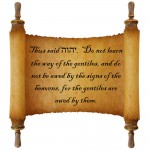
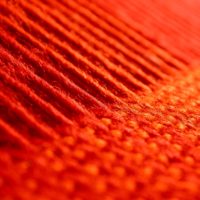
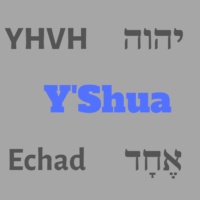
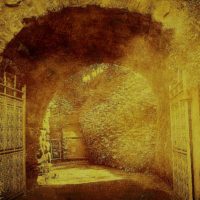


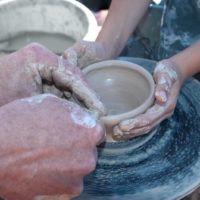
Leave a Reply